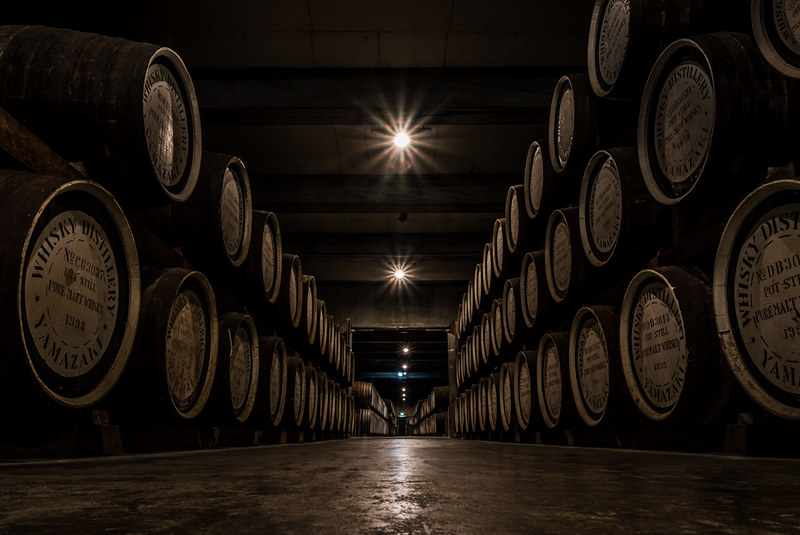May 30, 2023
Whisky, the King of Japanese Liquors
Whether it be a post-work drinking party with coworkers, a cold glass of red wine at home with friends, or a stress-reducing can of highball on the train home, Japan enjoys a tipple; of that, there can be no doubt. But what is Japan’s king of booze? The traditionalist may tell you it is the rice wine known as nihonshu in Japan and sake worldwide, but it could be argued that whisky is the pretender to the alcohol throne.
Japan’s whisky industry has carved out a prestigious niche in the global spirits market, captivating connoisseurs with its impeccable craftsmanship, attention to detail, and unwavering commitment to excellence. Inspired by the Scottish whisky tradition, Japan’s whisky production has flourished over the past century, establishing itself as a formidable force in the world of spirits.
Made in Japan, Inspired by Scotland
The roots of Japan’s whisky industry can be traced back to the early 20th century when the country’s first distillery, Yamazaki, was established in 1923. In that year, at the behest of Yamazaki, Masataka Taketsuru – the undisputed godfather of Japanese whisky – embarked on a journey to Scotland to learn the craft of whisky production and distillation methods, and upon his return, set about establishing and expanding Japan’s whisky industry. With a deep understanding of the art and science of whisky-making, Taketsuru combined traditional Scottish techniques with Japanese sensibilities, creating a unique fusion that defines Japanese whisky.

At the heart of Japan’s whisky industry lies a relentless pursuit of perfection. Japanese whisky distillers adhere to meticulous craftsmanship and pay extraordinary attention to detail, honing their skills through years of dedication and practice. From selecting the finest ingredients, including high-quality malted barley and pristine water sources, to closely monitoring the fermentation and distillation processes, every step is approached with unerring precision. The whisky is then aged in carefully chosen oak casks, often utilizing various wood types, resulting in the nuanced flavors and aromas that distinguish Japanese whisky from its international counterparts.
Adding a Japanese Twist
While Japanese whisky draws inspiration from Scottish traditions, it embraces innovation and adaptation. Japanese distillers have not stopped experimenting with unique techniques and flavors, pushing the boundaries of whisky-making. For instance, they have incorporated elements of Japanese culture, such as Mizunara oak casks, which impart distinct fragrances of sandalwood and incense to the spirit. Furthermore, Japan’s whisky producers have embraced different distillation methods, such as multiple still types, to create diverse whisky profiles. This spirit of innovation, combined with a deep respect for tradition, has allowed Japanese whisky to establish its own identity, setting it apart from other renowned whisky-producing countries.

The meteoric rise of Japan’s whisky industry has not gone unnoticed by the international community. In recent years, Japanese whiskies have gained significant recognition and received numerous prestigious awards, cementing their place among the finest spirits in the world. Distilleries like Yamazaki, Nikka, and Hakushu have consistently garnered accolades for their exceptional offerings, winning top honors at renowned competitions such as the World Whiskies Awards and the International Spirits Challenge. The global acclaim has propelled Japan’s whisky industry into the spotlight, attracting whisky enthusiasts from around the globe to explore and savor these remarkable brands.
World Domination?
Japan’s whisky industry stands as a testament to the industry’s unwavering dedication to craftsmanship, attention to detail, and innovative spirit. Through a harmonious blend of tradition and innovation, Japanese whisky has carved out a distinctive identity in the whisky world, captivating enthusiasts with its exquisite flavors. The future of Japan’s whisky industry looks promising, with a continued commitment to excellence and a growing global fanbase eagerly anticipating the next remarkable creation.
Image: By ScottSimPhotography via flickr.com [CC BY-NC-ND 2.0]
Image: By zhizhou deng via flickr.com [CC BY-NC-ND 2.0]
Image: By Stefaan Lesage via flickr.com [CC BY-NC-ND 2.0]


About the author